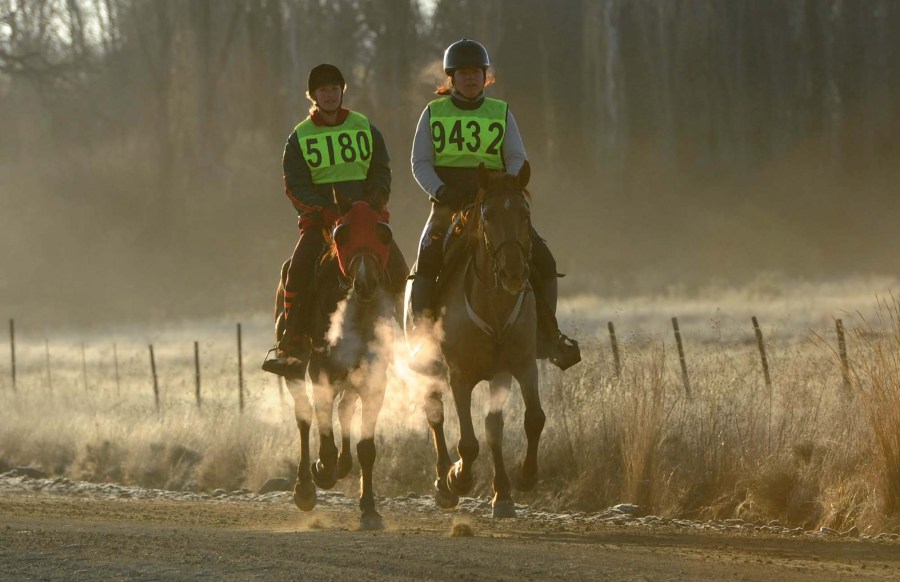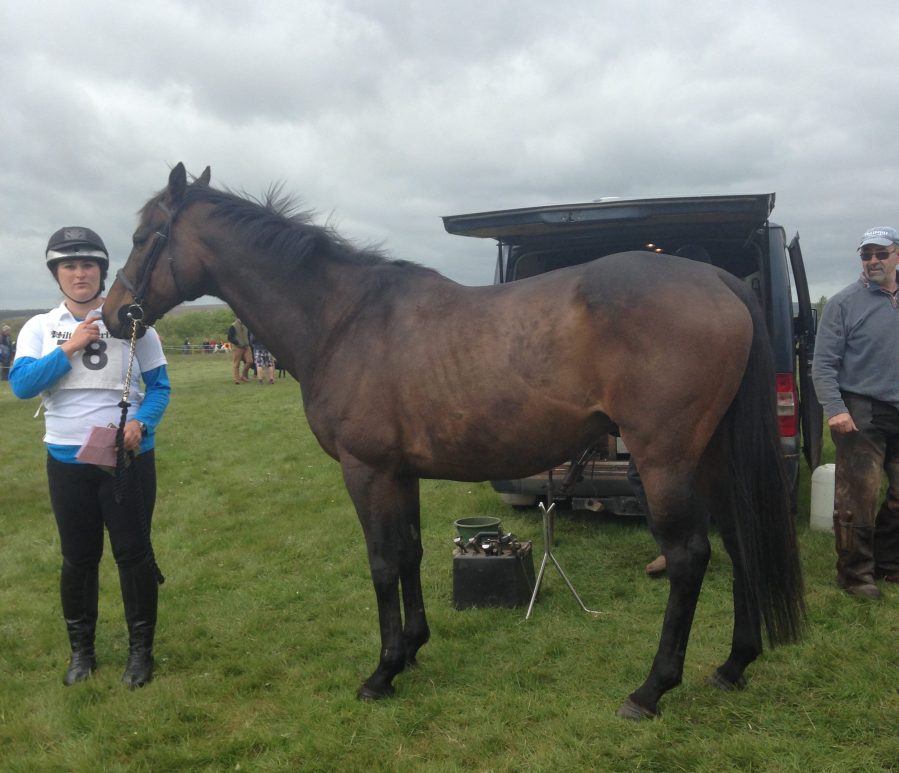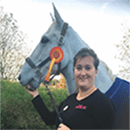If you love hacking with your horse, then taking part in an endurance ride could be the natural next step.
It is a very accessible sport, with events taking place all around the country. Any rider and horse can give it a go, and it’s not about riding as fast as you can as far as you can.
“At the most basic level, endurance is just a slightly longer hack,” says Heather Giles, director of PR and Communications at Endurance GB.
“It’s one of the most inclusive sports you can do with your horse.”
Endurance categories
Competitive endurance riding is split into three categories:
Pleasure rides
- These are non-competitive rides and require a simple trot up at the start and finish.
- They range in distance from 10km to 30km.
- Pleasure rides are essentially fun rides organised by Endurance GB, but they are also open to riders who aren’t members of Endurance GB.
Graded endurance rides (GERs)
- These rides range from 20km to 80km in length and generally take place on one day.
- Horses have to pass all the vet checks.
- Riders are given a grade at the end based on the speed they finished the ride and their horse’s heart rate.
- It isn’t a race against other riders.
- GERs are a bit like affiliated competitions.
Competitive endurance rides (CERs)
- These are competitive events where combinations vie for placings.
- Everyone starts together and horses must pass regular vet checks along the route.
- The first combination to cross the finish line and pass the final vet check wins.
- Day rides range from 80km to 160km.
Heather says: “If you’re considering stepping up to GERs, but aren’t sure if you’re ready to commit to a full membership, you can do up to three foundation novice rides on a day ticket. This way you can try before you buy.”
What to expect on the day
It can be nerve-racking to try something new if you don’t know what to expect, but a pleasure ride is relatively straightforward.
“Seven to 10 days before your ride, you will be able to download the map from the event page and find your bib number,” advises Heather.
“On the day itself you need to check in at the secretary’s tent, and you will receive a sticker or a wristband with the emergency phone number on it.
“Before you start, you will present your horse to the vet for a trot up. Once you’re given the all-clear you can head out.”
Most pleasure rides provide those taking part with a start time or a time window, and this needs to be kept in mind when planning an arrival time.
Depending on the event, too, attendees can try asking the organiser when they sign up whether they can be matched with a buddy, particularly if it is their first endurance ride or they are planning to attend alone.
To prevent going off piste, Heather also says: “It’s worth bringing along a paper copy of the map, but routes are well marked and there are stewards at checkpoints and road crossings, so it’s quite hard to get lost.”
At the end there will be another simple trot up for the vet, after which a rosette can be collected from the secretary’s tent.
Vet checks
For anyone thinking of trying a graded endurance ride, there are a few differences.
“Your horse has to have a full vetting before and after the ride,” says Heather.
“This includes a trot up and taking the horse’s heart rate.”
Riders putting their horse forward for a vet check for the first time can find it daunting, but it is in the horse’s best interest to ensure that they are fit and capable of handling the distance.
“It’s a really friendly sport and people are always willing to help, so don’t feel nervous,” adds Heather.
Endurance riding speed
For pleasure rides and graded endurance rides there isn’t the need to whizz around as quickly as possible.
“It’s more like going for a long hack than being part of a race,” explains Heather.
“There are minimum speeds — 6km per hour for pleasure rides and 8km for foundation novice GERs — but this is more from a security point of view and to ensure that riders aren’t out beyond the end of the event.”
When riding against the clock, endurance use a pacing technique, so that they ride at a consistent pace rather than needing to alter between riding very fast or very slow.
Just as with any hack through the British countryside, no one can gallop non-stop even if they want to.
“Routes are held over public bridleways and private land. They aren’t man-made courses that you can travel over at speed for great distances,” says Heather.
“It’s just like hacking out — walk when you have to, trot when you can and canter if possible. You can take it at your own pace and one that makes you feel comfortable.”
For graded rides, the purpose isn’t about crossing the line first, but rather to receive a grading.
“You are given a grade that is calculated according to the speed you ride, as well as bringing your horse’s heart rate down,” explains Heather.

Suitable horses
A fit, healthy and sound horse should be capable of doing grassroots level endurance, regardless of their breed.
“There’s no denying that at the top level, Arabs and horses with a high percentage of Arab blood do well,” says Heather.
“However, at grassroots level there’s a whole range of breeds competing.
“It’s all about managing the horse you have and putting things into place to cater to their needs.
“You get to learn what your horse requires as you gain more experience.
“For example, a cob type might prefer to trot rather than canter. They may also need more cooling on a hot day compared to an Arab or Thoroughbred.
“Having said all that, any breed can be used for endurance. There’s one lady who does 40km on her Shire horse — so we really are open to everyone.”
Tack and equipment
Anyone wanting to give endurance a serious go may be tempted to invest in new tack and equipment for themselves and their horse.
“I’d say that up to 40km level you don’t really need anything more than well-fitting tack,” says Heather.
“If it’s not well-fitted, any problems will make themselves known as you’ll be spending a long time in the saddle.”
Anyone serious about stepping up the levels, should consider a heart rate monitor.
“You can track your horse’s heart rate, which is a reliable way of checking his fitness. Many come with GPS too, so you can track distances,” adds Heather.
My endurance experience
I competed my ex-racehorse, Bee, in a celebratory endurance ride to mark the 50th anniversary of the Golden Horseshoe on Exmoor.
Although we do a lot of hacking and fun rides and are experienced at riding decent distances, it was my first taste of endurance riding.
Consequently I arrived fairly clueless about where to go and what to do, but confident that I was sitting on a fit Thoroughbred and looking forward to our ride.
I collected my number and scouted out where the start line and vet area were. Meanwhile my back-up team (my grandparents, Mollie and Brian, both well into their eighties) tacked up Bee.
It was my first experience of a vet inspection. This made me more nervous than the ride itself! Bee stood quietly for the vet (he’s a very chilled soul) and was given the all clear before we set off.

Map reading
We both loved the ride. Although I grew up in Devon, I haven’t ridden on Exmoor very often.
The terrain is variable: up and down, with some stoney paths to navigate and some nice canter stretches. Also several gates to open and close.
Our average speed of around 10-11km/h felt easy and, in hindsight, Bee could have gone quicker.
Alas, my map reading skills leave a lot to be desired and we slowed down too early (I thought we were closer to the finish line than we actually were).
Nevertheless we finished feeling happy and I spent time walking Bee in hand with regular washing off to cool him down while waiting for his second vet inspection.
He passed with flying colours — his heart rate is only two beats higher than it was in the morning.
My lovely yellow rosette for finishing third is still on my wall now — it’s a very happy memory.
I really enjoyed the experience. If you love hacking too, I totally recommend giving an endurance competition a go.
Top tips for first timers
- Anyone wishing to get a feel for endurance riding before mounting up could consider volunteering at a local ride beforehand. That way you will learn what to expect without the worry of having to climb into the saddle.
- Arrive in plenty of time so that you can find the secretary’s tent and the start line and vetting area. If you’re not an early rider, it can be helpful to watch a few start before you need to get your horse ready.
- Find out how soon after finishing you need to present your horse to the vet. Work backwards so that you have enough time to let your horse’s heart rate come down. This is likely to mean a slower finish rather than a fast one.
- Practise monitoring your horse’s heart rate and how quickly they recover at home. This will help you track their fitness levels too.
- Remember to breathe and remind yourself that this is good fun. Enjoy it!
To find a local ride or to find out more about joining Endurance GB, visit their website.
Main image by Endurance GB/Kerry Dawson. Co-written by Mel Beale








